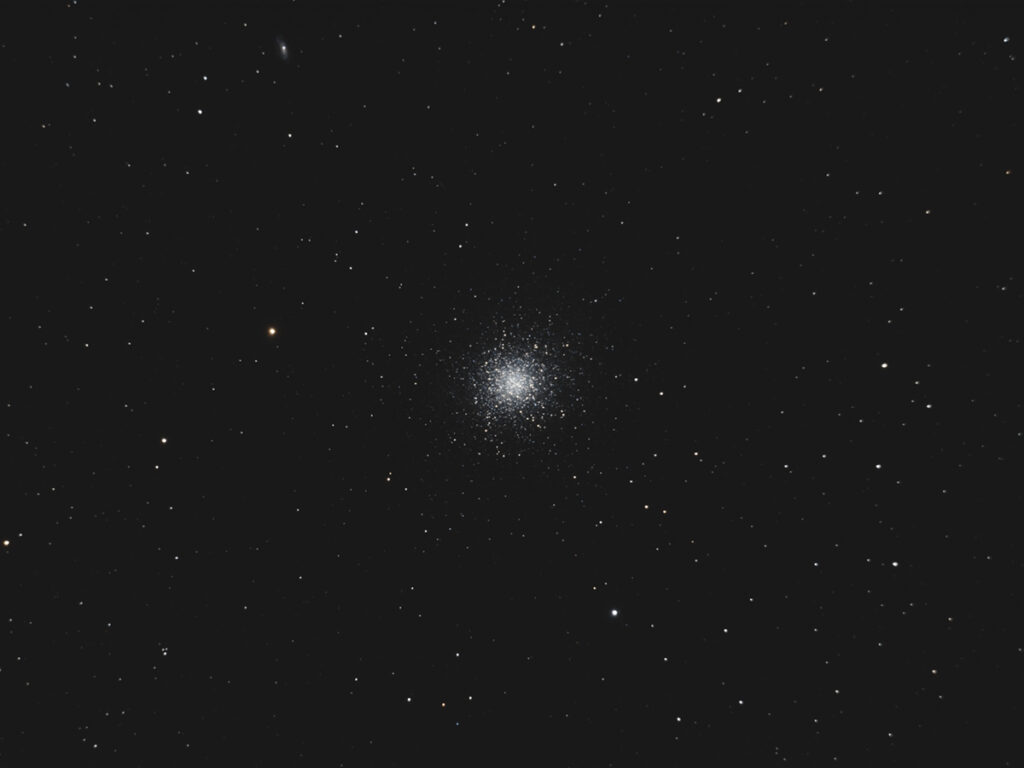
Telescope: Meade SN10 at f/4, Orion Atlas EQ-G
Camera: QHY 268c, Mode 0, Gain 30, Offset 30, -10C
Filter: GSO IR Blocking Filter
Guide scope: Williams Optics 50mm, ASI290MM mini, PHD
Exposure: 52x120sec, saved as FITS
Darks: 32×300 sec
Flats: 64×0.1 sec, tee shirt flats taken at dusk
Average Light Pollution: Red zone, poor transparency, haze
Lensed Sky Quality Meter: 18.5 mag/arc-sec^2
Stacking: Mean with a 1-sigma clip.
White Balance: Nebulosity Automatic
Software: SharpCap Pro, Nebulosity, Deep Sky Stacker, Photoshop
This is M13, the Great Cluster in Hercules. Also in the picture is the spiral galaxy NGC 6207 (Mv 11.6) in the upper left corner, and about halfway between NGC 6207 and M13 is the tiny edge-on galaxy IC 4617 (Mv 15.2) . If you look carefully at M13 you can see a dust lane to the lower left of the cluster. This is a very unusual feature for globular clusters and it is not clear if this is actually associated with M13 or simply front of the cluster.
M13 currently rises in the northeast during the early evening.
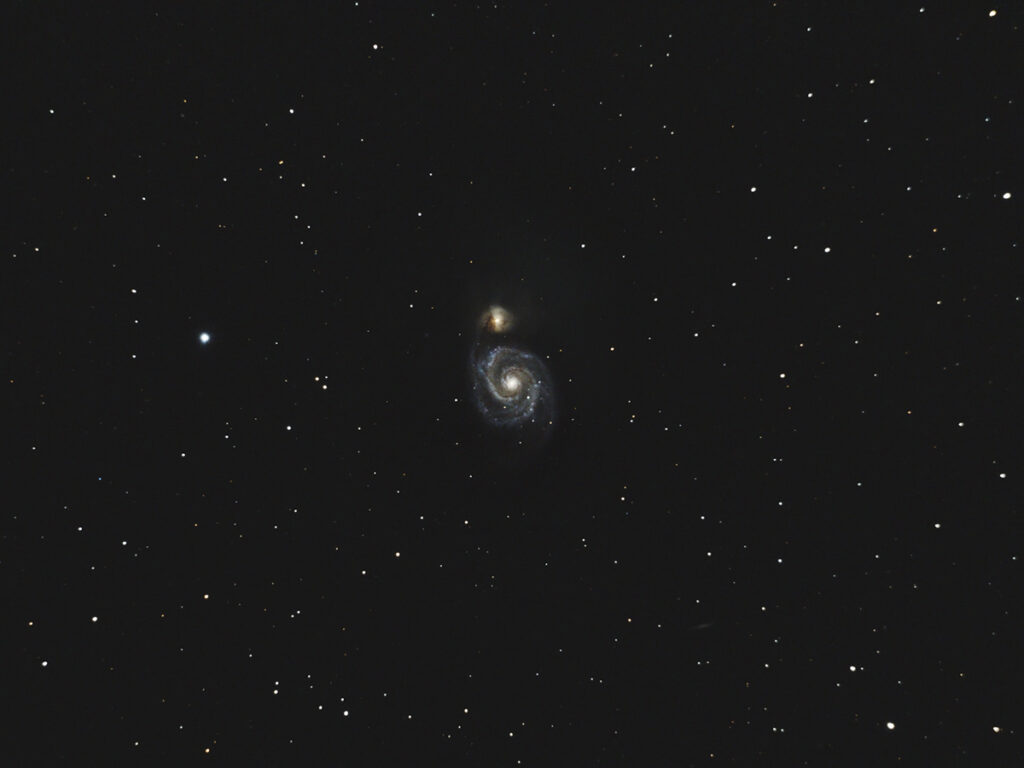
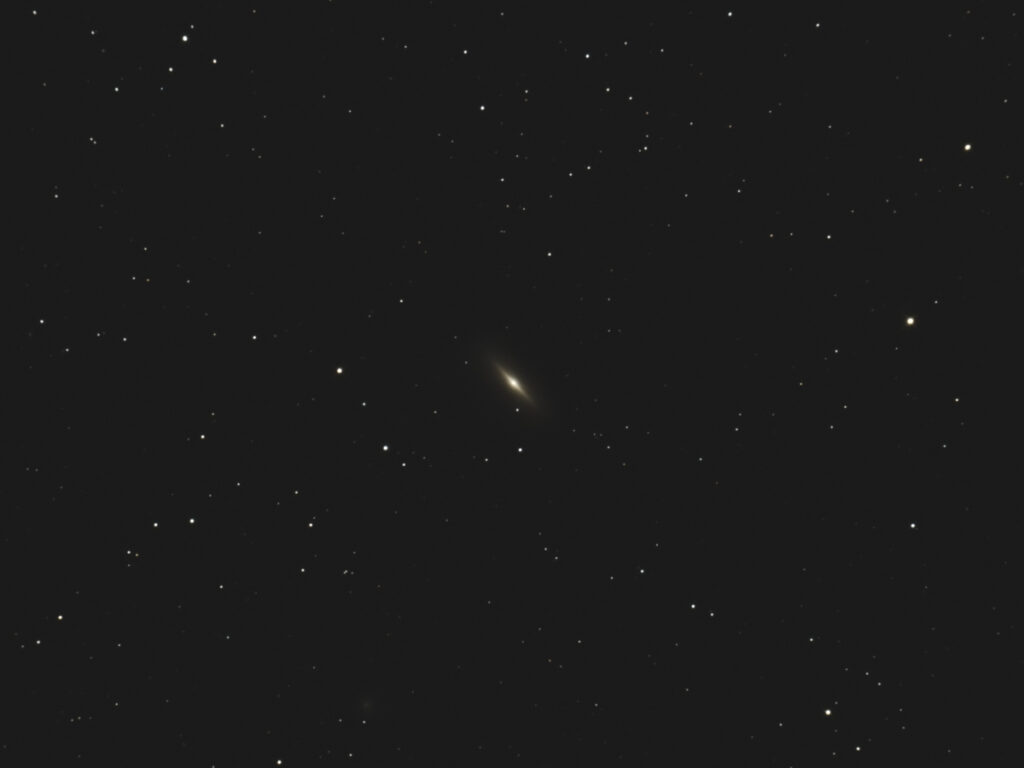
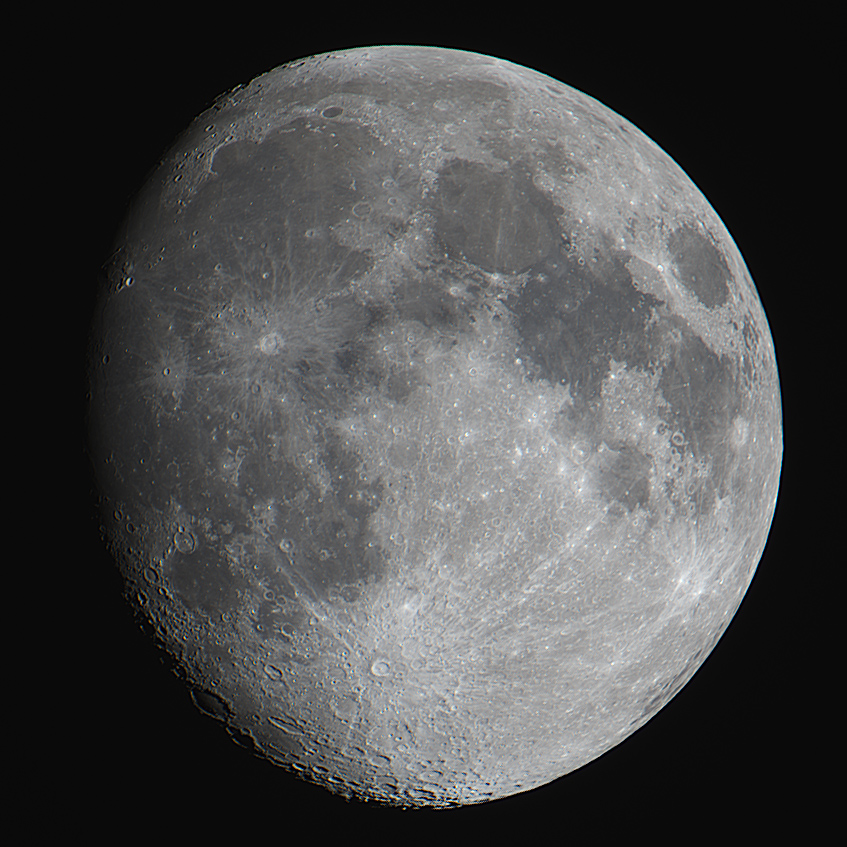
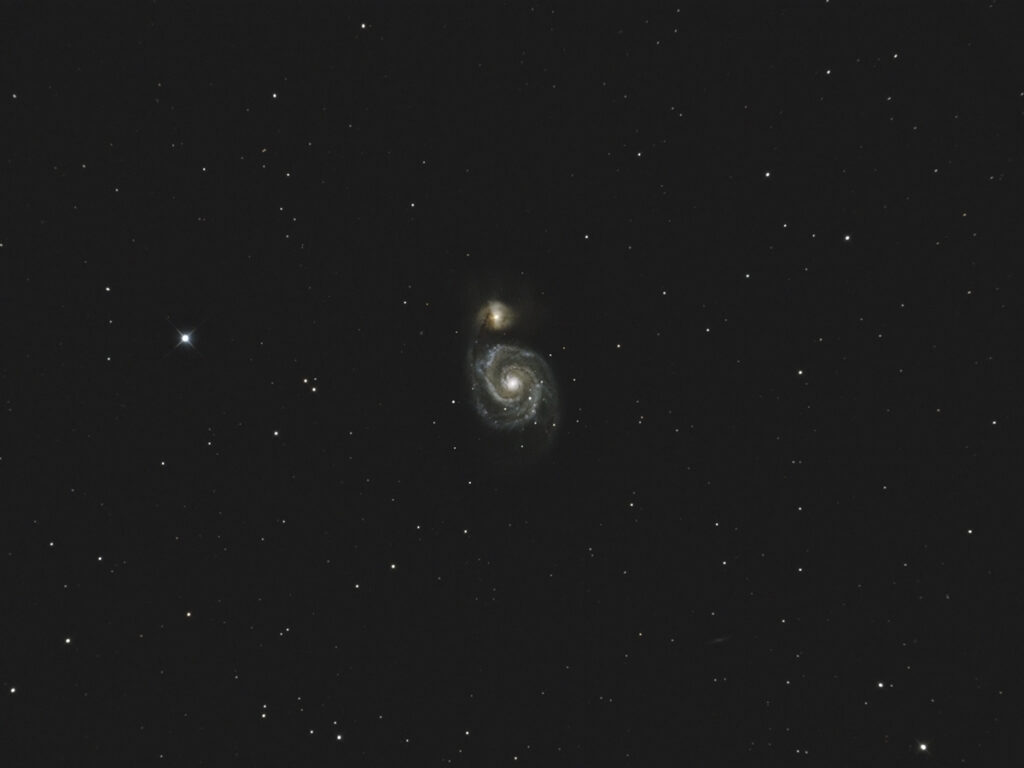
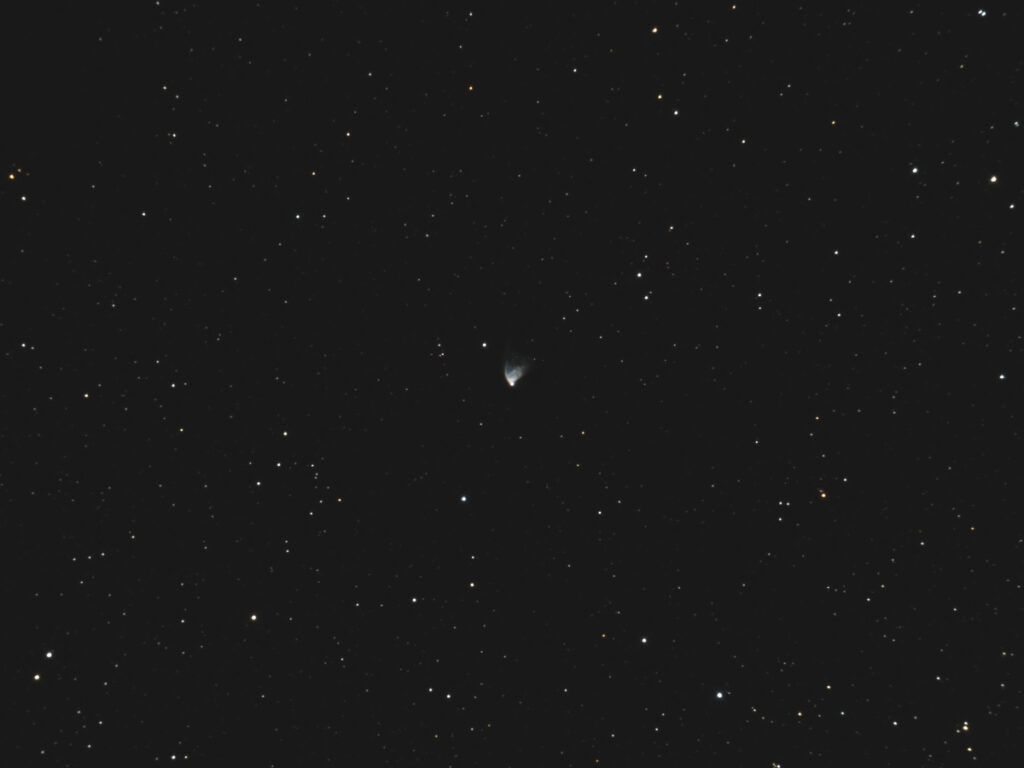
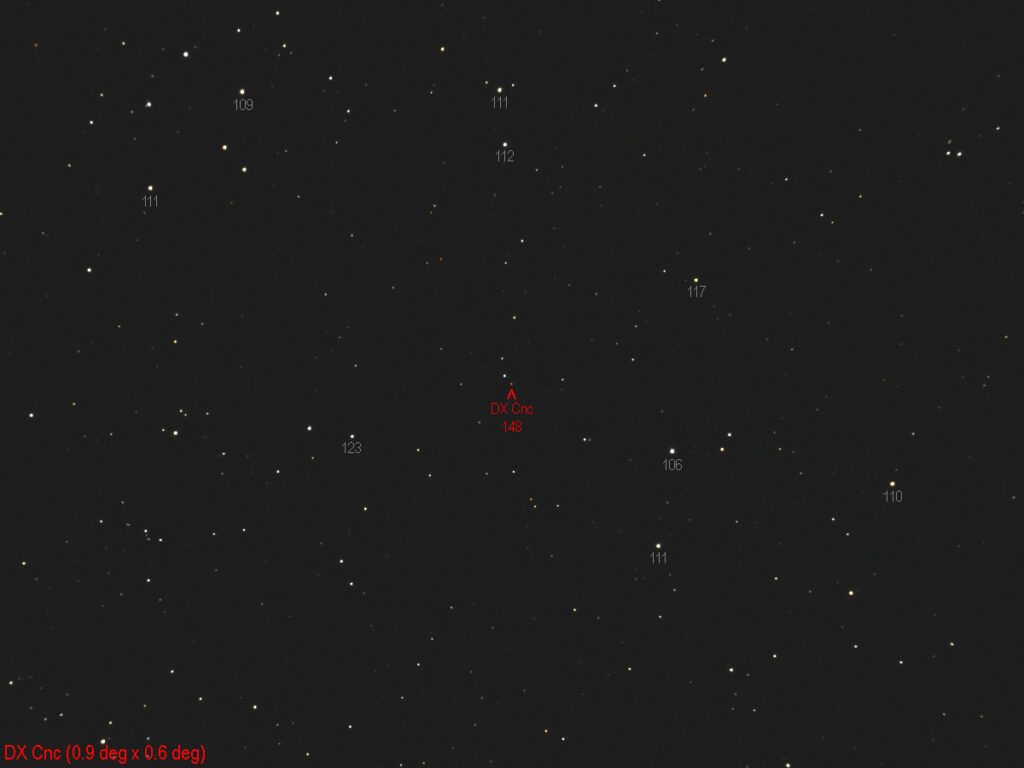
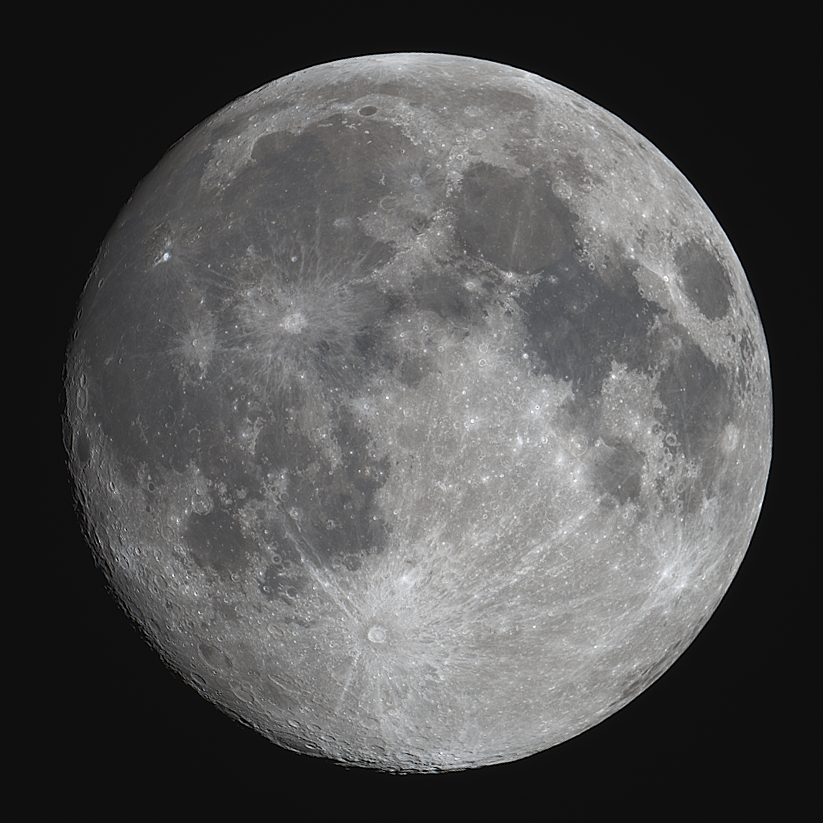

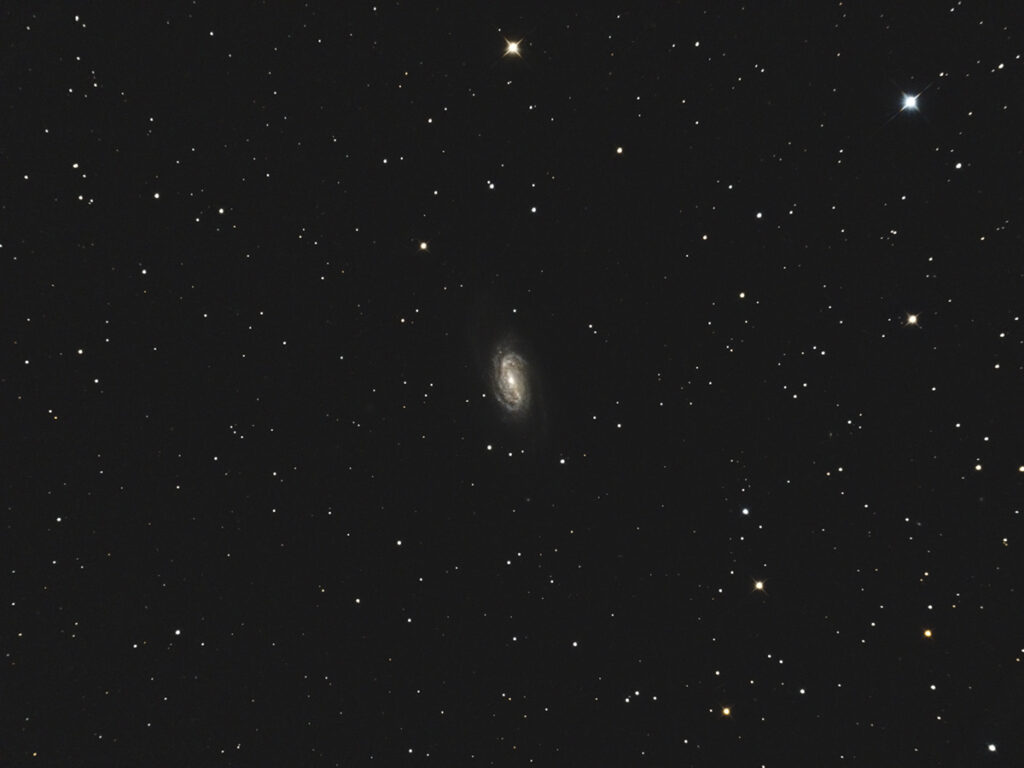
Recent Comments